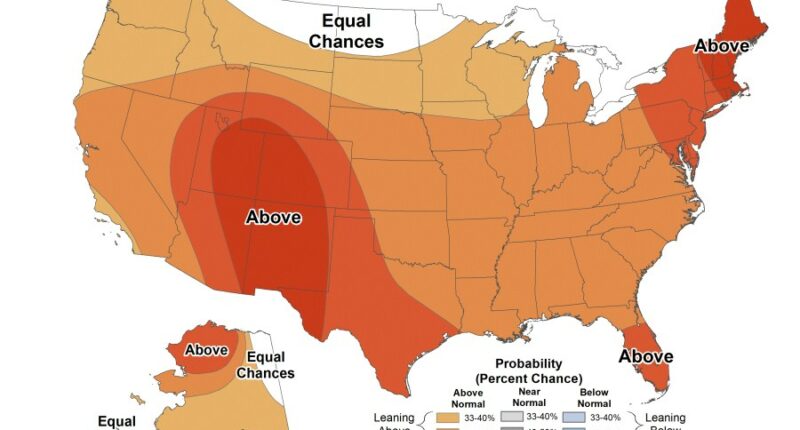Share this @internewscast.com
(NEXSTAR) – This fall is looking pretty summery, if a new national forecast is any indication.
The Climate Prediction Center, part of the National Oceanic and Atmospheric Administration (NOAA), announced new seasonal weather forecasts on Thursday, indicating that most areas across the nation are likely to experience a warmer than usual autumn.
The areas with the highest probability—between 60% and 70%—for a particularly hot beginning to fall are located in the Southwest and New England, marked in deep red on the map. However, no matter where you reside, the prediction suggests above-average temperatures from September through November.
A narrow section of the nation close to the Canadian border remains uncertain, with equal chances of experiencing a warm, cool, or typical fall season.

Even with the orange and red hues dominating the latest forecast map, 2025 is not projected to surpass past temperature records, based on a summer study by Carbon Brief. Nonetheless, 2025 could potentially become the second or third hottest year worldwide, depending on how the latter half unfolds.
Last year, El Niño contributed to the warming trend, but it has since dissipated. This year, a brief La Niña is anticipated to develop sometime between September and December.
Should La Niña start affecting weather patterns in the coming months, it is expected that the southern portion of the country will experience drier, warmer conditions, while regions such as the Pacific Northwest and the Ohio Valley may receive more rainfall than usual.
A hint of that pattern is evident in NOAA’s updated precipitation outlook, which calls for dry conditions in the Southwest, especially.

A dry fall would exacerbate drought conditions that are already present in the region and growing severe in Arizona, New Mexico, Utah, Colorado, Nevada and Southern California.
Hawaii, which isn’t shown in the maps above, is also expected to see below-normal precipitation this fall over Maui and the Big Island. The islands also aren’t immune to the warm weather trend we’re seeing in the continental U.S.; above-normal temperatures are predicted for Kauai, Oahu and Maui.
















